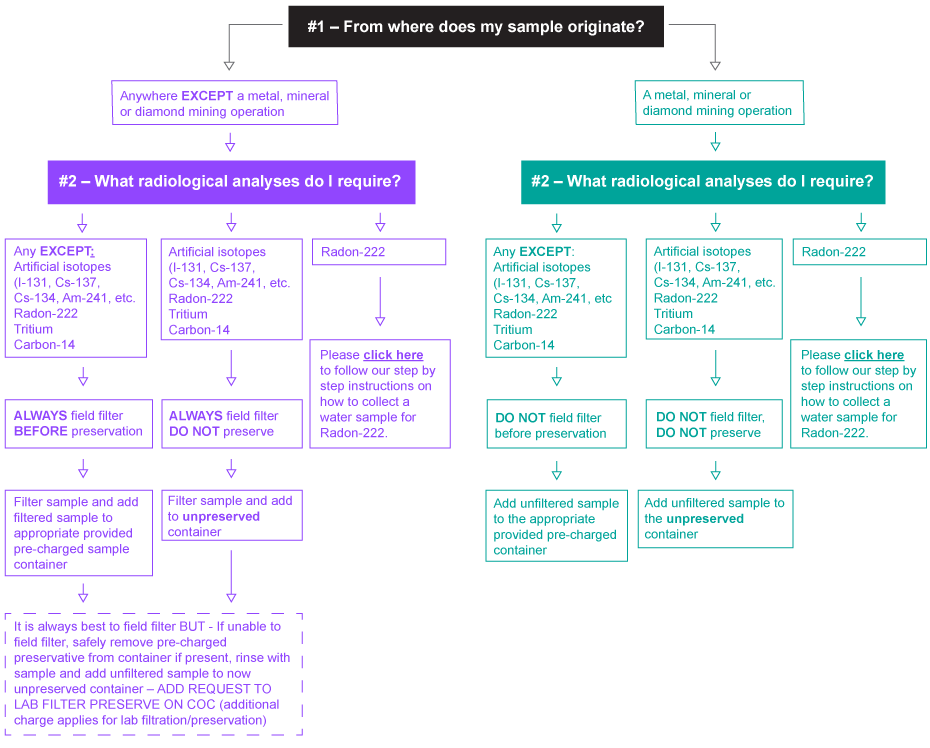Laboratory
Radiological Analyses in Water: Field Filter or Preserve?
Oct. 6 2022
Radiological analysis is an important tool that provides data that helps with characterizing waste, remediating sites and ensuring compliance with regulations in mining, manufacturing and power generation.
As a leader in radiological analysis with over 30 years of experience, Bureau Veritas has identified sampling best practices that are key contributors to data quality. Amongst these, field filtering and preservation require some extra consideration before sampling to ensure the appropriate actions are taken for your samples. Asking the following questions will assist in determining whether field filtration and/or preservation are necessary:
- From where does my sample originate?
- What radiological analyses do I require?
Refer to the flow chart in Figure 1 as you answer these questions to determine what is required for your project.
Samples that require filtering should be filtered in the field using a 0.45 μm filter. It should be noted that when samples require preservation, containers may be pre-charged with 18% nitric acid so please ensure appropriate PPE is used.
Using the correct containers and preservatives along with the appropriate sampling techniques is critical. The type, size and number of containers provided is based on the volumes required for each particular analysis. Unless otherwise stated on the packing slip included with your order, it is best to ensure that provided containers are full when submitted.
Figure 1: Radiological Analyses in Water: Filter or Preserve?
Sampling for Radon-222 in water? Please refer to our step-by-step instructions on how to collect a sample. For further information in regards to containers, filtering and preservation, please contact Bureau Veritas Customer Solutions.
